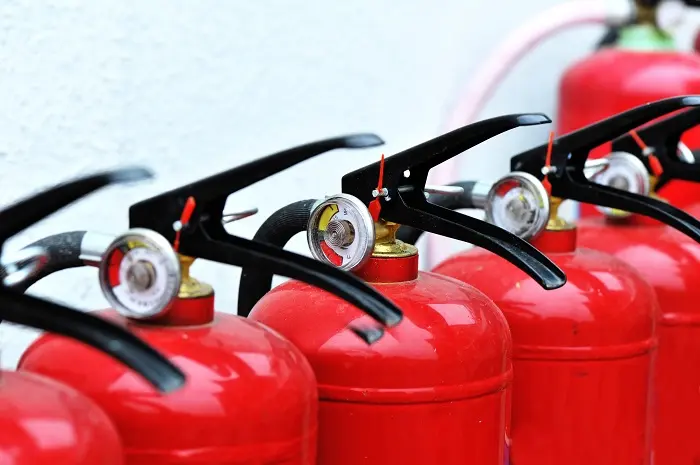Fire safety is a crucial aspect of both residential and commercial environments. Among the various types of fires, Class A fires are particularly common, involving ordinary combustibles such as wood, paper, cloth, and some types of plastics. Choosing the correct fire extinguisher for Class A fires is vital for effective fire suppression. This article explores what Class A fires are, the types of extinguishers suited for them, and best practices for fire safety.
Class A fires can occur in any setting, from homes to offices and industrial environments. Understanding the nature of these fires and the appropriate extinguishing methods is essential for preventing damage and ensuring safety. This article aims to provide a comprehensive guide on Class A fires, the extinguishers used for them, and how to effectively use these extinguishers in an emergency.
What is a Class A Fire?
Definition and Characteristics
Class A fires involve ordinary combustible materials. These include:
Wood: Furniture, structural beams, and pallets.
Paper: Books, cardboard, and office supplies.
Cloth: Clothing, curtains, and upholstery.
Some Plastics: Items made from common plastic materials that can ignite easily.
Causes of Class A Fires
Class A fires can be caused by various factors, including:
Cooking Accidents: Grease fires can quickly escalate if they come into contact with combustible materials.
Electrical Malfunctions: Faulty wiring or overloaded circuits can ignite paper or wood products.
Heating Devices: Space heaters and other heating appliances can cause fires if placed too close to combustible materials.
Identifying Class A Fires
Class A fires typically produce a steady flame and can generate a lot of smoke. The materials involved will often burn with an amber flame, and the fire can spread quickly if not contained.
The Importance of Fire Extinguishers
Fire extinguishers are critical for controlling and extinguishing small fires before they escalate into larger emergencies. Having the right type of extinguisher readily available can make a significant difference in effectively managing a Class A fire.
Types of Extinguishers for Class A Fires
1. Water Extinguishers (Class A)
Description: Water extinguishers are the most common type used for Class A fires. They work by cooling the burning material and reducing the heat to below its ignition temperature.
Use:
Effective on ordinary combustibles like wood and paper.
Not suitable for flammable liquids, electrical fires, or cooking oil fires.
Limitations:
Ineffective on fires involving grease or oil.
Not recommended for use on electrical fires.
2. Foam Extinguishers (Class A and B)
Description: Foam extinguishers can be used on both Class A and B fires. They create a blanket of foam that smothers the fire and prevents oxygen from fueling it.
Use:
Effective for flammable liquids and ordinary combustibles.
Can cool down burning materials while forming a barrier.
Limitations:
Less effective on fires involving gases.
Foam can damage certain types of electronics.
3. Dry Powder Extinguishers (Class A, B, and C)
Description: Dry powder extinguishers are versatile and can be used on various classes of fires, including Class A. They work by interrupting the chemical reaction of the fire.
Use:
Effective on a wide range of combustible materials, including wood and paper.
Suitable for flammable gases and liquids.
Limitations:
Can leave a residue that requires cleanup.
Less effective on fires involving cooking oils.
4. Wet Chemical Extinguishers (Primarily for Class K)
Description: While primarily designed for Class K fires (cooking oils), wet chemical extinguishers can also be effective for Class A fires involving cooking-related materials.
Use:
Effective for fires caused by cooking oils and fats.
Can also work on other combustible materials, particularly in a kitchen setting.
Limitations:
Not suitable for flammable liquids or electrical fires.
How to Use a Fire Extinguisher
Knowing how to use a fire extinguisher properly can save lives and property. Follow the PASS technique:
Pull the pin to break the seal.
Aim the nozzle at the base of the fire.
Squeeze the handle to release the extinguishing agent.
Sweep the nozzle side to side at the base of the fire until it is extinguished.
Safety Precautions
Always stand a safe distance away from the fire.
If the fire spreads or if you feel unsafe, evacuate immediately and call emergency services.
Ensure that you have a clear escape route before attempting to extinguish the fire.
Maintenance of Fire Extinguishers
Regular maintenance of fire extinguishers is essential to ensure they work effectively when needed. Follow these guidelines:
Inspection: Check extinguishers monthly for visible damage, pressure gauge readings, and accessibility.
Annual Servicing: Have a qualified technician perform an annual inspection and servicing.
Recharge: After use, even if it was a partial discharge, have the extinguisher recharged or replaced.
Conclusion
Understanding Class A fires and the appropriate extinguishers to use is vital for effective fire safety. Water, foam, dry powder, and wet chemical extinguishers are all suitable options, each with its specific applications and limitations. By knowing how to use these extinguishers correctly and maintaining them properly, individuals and organizations can enhance their fire safety measures, reducing the risk of fire-related incidents.
Related topics:

